Internal Microscopic Diagnosis of Accelerated Aging of Proton Exchange Membrane Water Electrolysis Cell Stack
Abstract
:1. Introduction
2. Research Methods
2.1. Sensing Principle of Micro Temperature Sensor
2.2. Sensing Principle of Micro Humidity Sensor
2.3. Process Development of Flexible Integrated Microsensor
- (a)
- PI thin film cleaning
- (b)
- Evaporate metal
- (c)
- Photolithography
- (d)
- Metal etching
- (e)~(i)
- Dielectric layer definition, evaporate metal, metal etching and protection layer definition
2.4. Correction of Flexible Integrated Microsensor
3. Accelerated Aging Test for PEM Water Electrolysis Cell Stack
3.1. 100-h Accelerated Aging Test Conditions for PEM Water Electrolysis Cell Stack
3.2. Local Temperature and Voltage in 100-h Accelerated Aging of PEM Water Electrolysis Cell Stack
3.3. Local Current Density in 100-h Accelerated Aging of PEM Water Electrolysis Cell Stack
3.4. Local Flow in 100-h Accelerated Aging of PEM Water Electrolysis Cell Stack
3.5. Analysis of Internal Parts of PEM Water Electrolysis Cell Stack after Accelerated Aging Test
4. Conclusions
Author Contributions
Funding
Acknowledgments
Conflicts of Interest
References
- Huang, Y.S.; Liu, S.J. Chinese green hydrogen production potential development: A provincial case study. IEEE Access 2020, 8, 171968–171976. [Google Scholar] [CrossRef]
- Falcão, D.S.; Pinto, A. A review on PEM electrolyzer modelling: Guidelines for beginners. Int. J. Hydrog. Energy 2020, 261, 121184–121193. [Google Scholar] [CrossRef]
- Rozain, C.; Millet, P. Electrochemical characterization of polymer electrolyte membrane water electrolysis cells. Electrochim. Acta 2014, 131, 160–167. [Google Scholar] [CrossRef]
- Millet, P.; Nagameni, R.; Grigoriev, S.A.; Mbemba, N.; Brisset, F.; Ranjbari, A.; Etievant, C. PEM water electrolyzers: From electrocatalysis to stack development. Int. J. Hydrog. Energy 2010, 35, 5043–5052. [Google Scholar] [CrossRef]
- Grigoriev, S.A.; Millet, P.; Korobtsev, S.V.; Porembskiy, V.I.; Pepic, M.; Etievant, C.; Puyenchet, C.; Fateev, V.N. Hydrogen safety aspects related to high-pressure polymer electrolyte membrane water electrolysis. Int. J. Hydrog. Energy 2009, 34, 5986–5991. [Google Scholar] [CrossRef]
- Selamet, O.F.; Becerikli, F.; Mat, M.D.; Kaplan, Y. Development and testing of a highly efficient proton exchange membrane (PEM) electrolyzer stack. Int. J. Hydrog. Energy 2011, 36, 11480–11487. [Google Scholar] [CrossRef]
- Siracusano, S.; Baglio, V.; Briguglio, N.; Brunaccini, G.; Blasi, A.D.; Stassi, A.; Ornelas, R.; Trifoni, E.; Antonucci, V.; Arico, A.S. An electrochemical study of a PEM stack for water electrolysis. Int. J. Hydrog. Energy 2012, 37, 1939–1946. [Google Scholar] [CrossRef]
- Rozain, C.; Mayousse, E.; Guillet, N.; Millet, P. Influence of iridium oxide loadings on the performance of MEA water electrolysis cells: Part 2–advanced oxygen electrodes. Appl. Catal. B 2016, 182, 123–131. [Google Scholar] [CrossRef]
- Siracusano, S.; Baglio, V.; Stassi, A.; Ornelas, R.; Antonucci, V.; Aricò, A.S. Investigation of IrO2 electrocatalysts prepared by a sulfite-couplex route for the O2 evolution reaction in solid polymer electrolyte water electrolyzers. Int. J. Hydrog. Energy 2010, 36, 7822–7831. [Google Scholar] [CrossRef]
- Millet, P.; Ranjbari, A.; Guglielmo, F.D.; Grigoriev, S.A.; Auprêtre, F. Cell failure mechanisms in PEM water electrolyzers. Int. J. Hydrog. Energy 2012, 37, 17478–17487. [Google Scholar] [CrossRef]
- Grigoriev, S.A.; Porembskiy, V.I.; Korobtsev, S.V.; Fateev, V.N.; Auprêtre, F.; Millet, P. High-pressure PEM water electrolysis and corresponding safety issues. Int. J. Hydrog. Energy 2011, 36, 2721–2728. [Google Scholar] [CrossRef]
- Stucki, S.; Scherer, G.G.; Schlagowski, S.; Fischer, E. PEM water electrolysers: Evidence for membrane failure in 100kW demonstration plants. J. Appl. Electrochem. 1998, 28, 1041–1049. [Google Scholar] [CrossRef]
- Grigoriev, S.A.; Dzhus, K.A.; Bessarabov, D.G.; Millet, P. Failure of PEM water electrolysis cells: Case study involving anode dissolution and membrane thinning. Int. J. Hydrog. Energy 2014, 39, 20440–20446. [Google Scholar] [CrossRef]
- Verdin, B.; Onana, F.F.; Germe, S.; Serre, G.; Jacques, P.A.; Millet, P. Operando current mapping on PEM water electrolysis cells. Influence of mechanical stress. Int. J. Hydrog. Energy 2017, 42, 25848–25859. [Google Scholar] [CrossRef]
- Möckl, M.; Bernt, M.; Schröter, J.; Jossen, A. Proton exchange membrane water electrolysis at high current densities: Investigation of thermal limitations. Int. J. Hydrog. Energy 2020, 45, 1417–1428. [Google Scholar] [CrossRef]
- Ito, H.; Kawaguchi, N.; Someya, S.; Munakata, T. Pressurized operation of anion exchange membrane water electrolysis. Electrochim. Acta 2019, 297, 188–196. [Google Scholar] [CrossRef]
- Chakik, F.E.; Kaddami, M.; Mikou, M. Effect of operating parameters on hydrogen production by electrolysis of water. Int. J. Hydrog. Energy 2017, 42, 25550–25557. [Google Scholar] [CrossRef]
- Grigoriev, S.A.; Fateev, V.N.; Bessarabov, D.G.; Millet, P. Current status, research trends, and challenges in water electrolysis science and technology. Int. J. Hydrog. Energy 2020, 45, 26036–26058. [Google Scholar] [CrossRef]
- Lee, C.Y.; Chen, C.H.; Li, S.C.; Wang, Y.S. Development and application of flexible integrated microsensor as real-time monitoring tool in proton exchange membrane water electrolyzer. Renew. Energy 2019, 143, 906–914. [Google Scholar] [CrossRef]


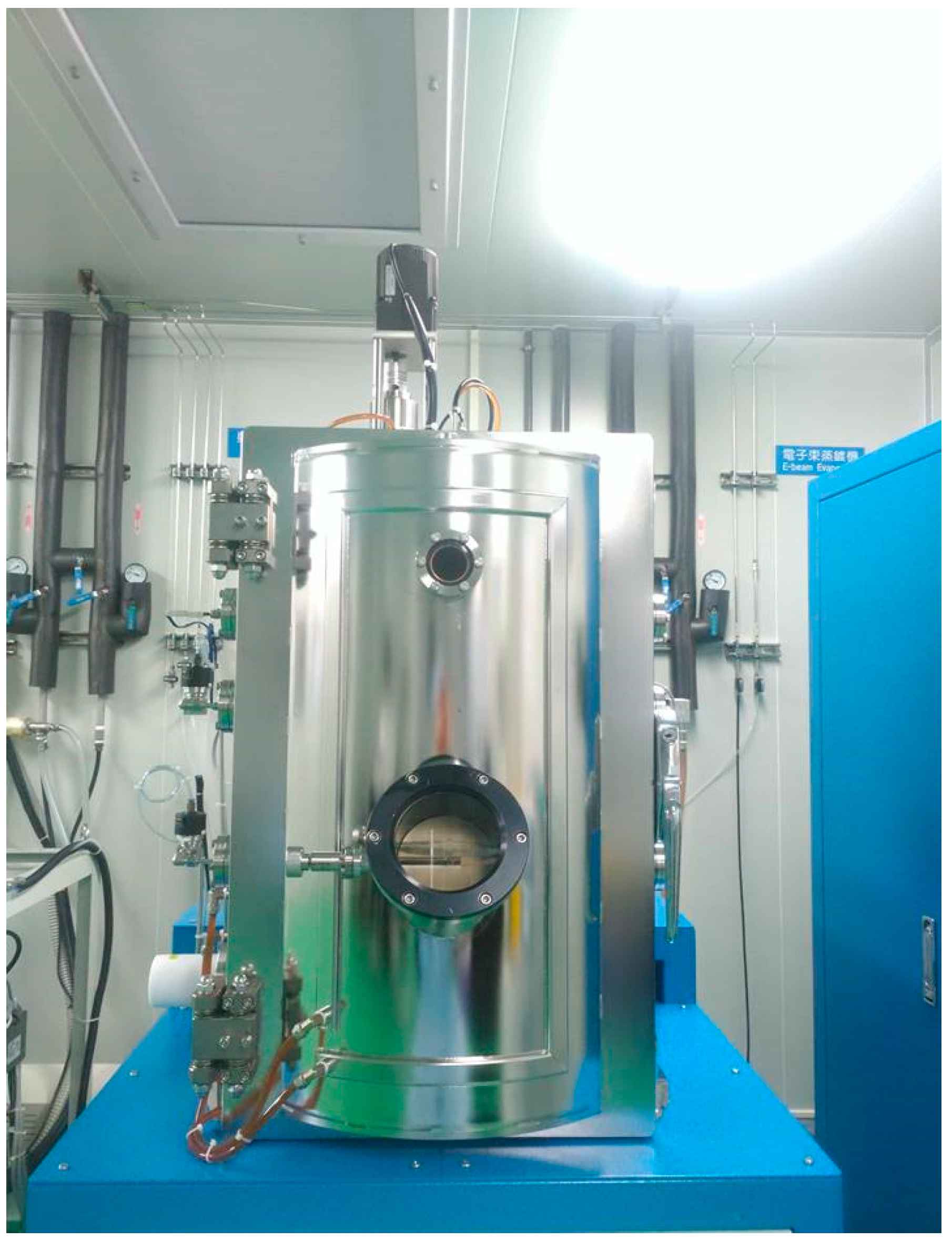
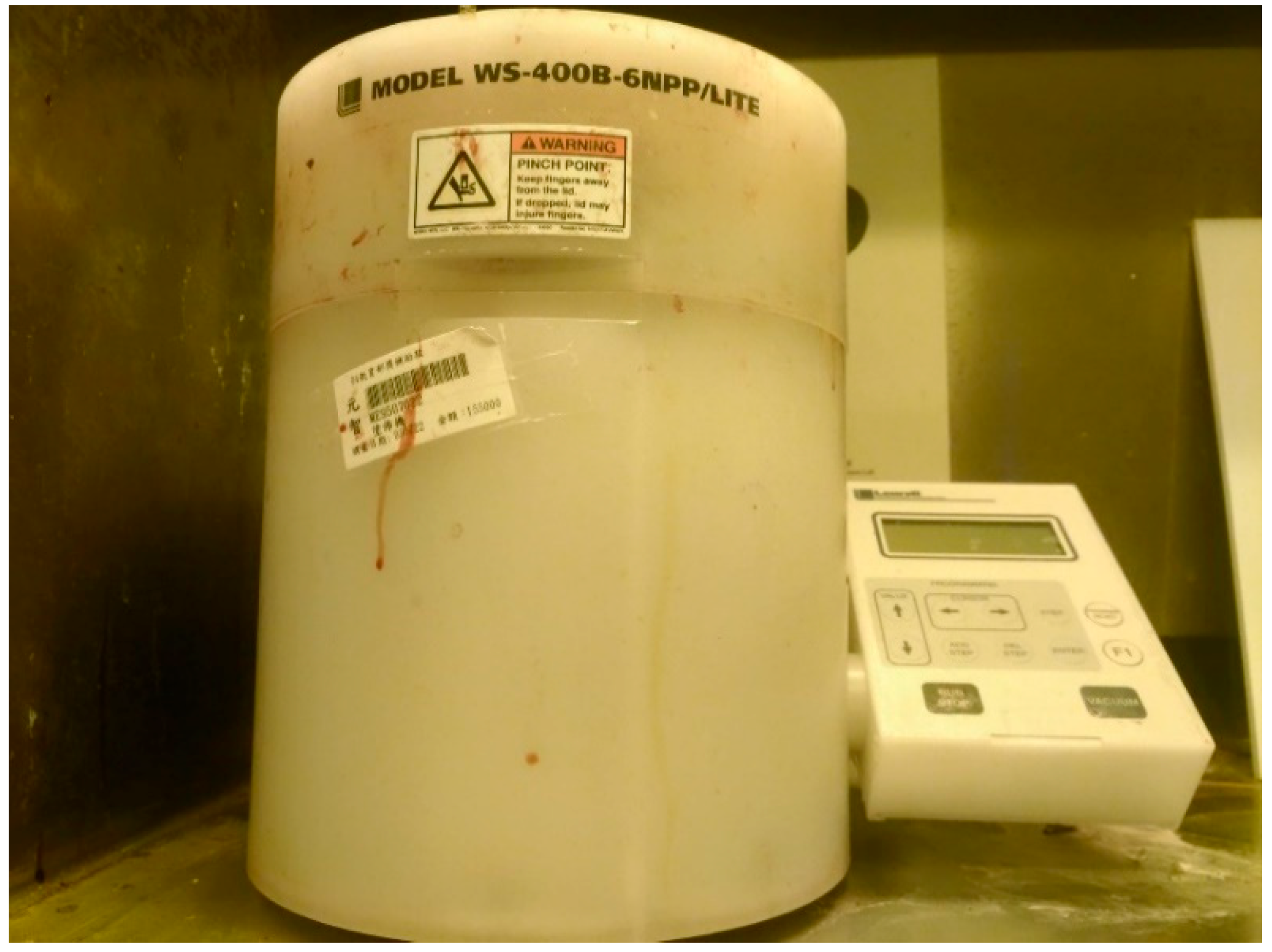
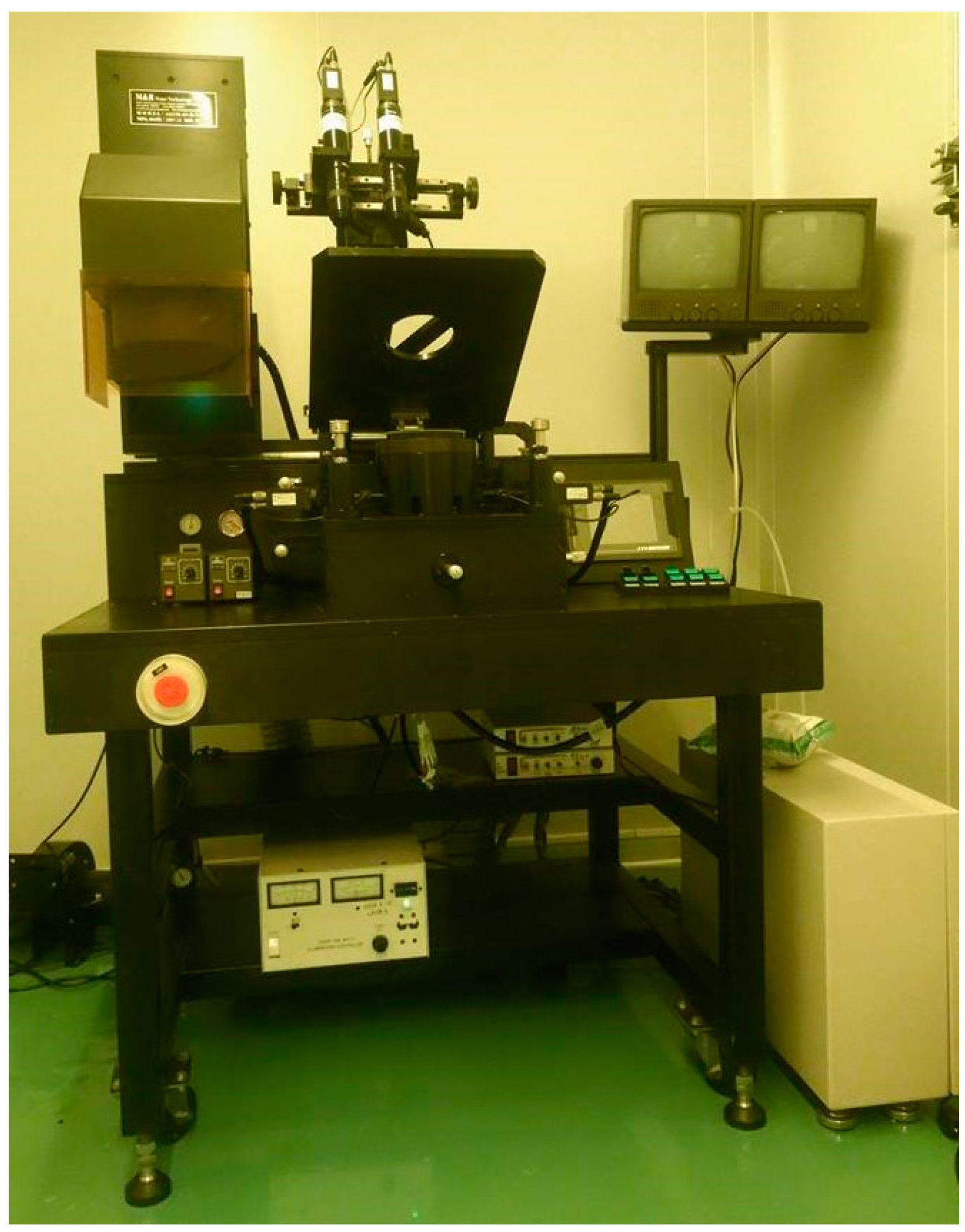


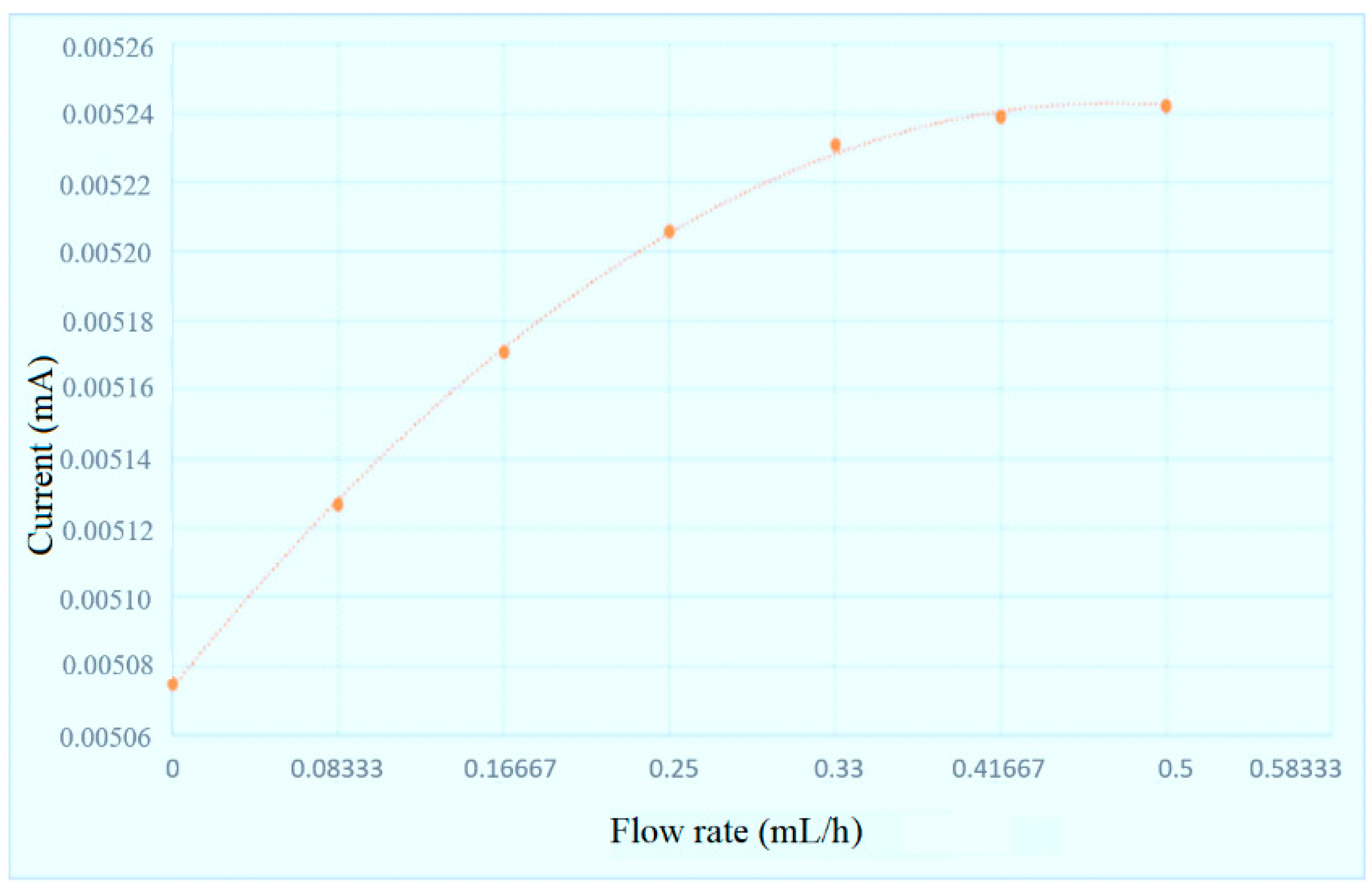
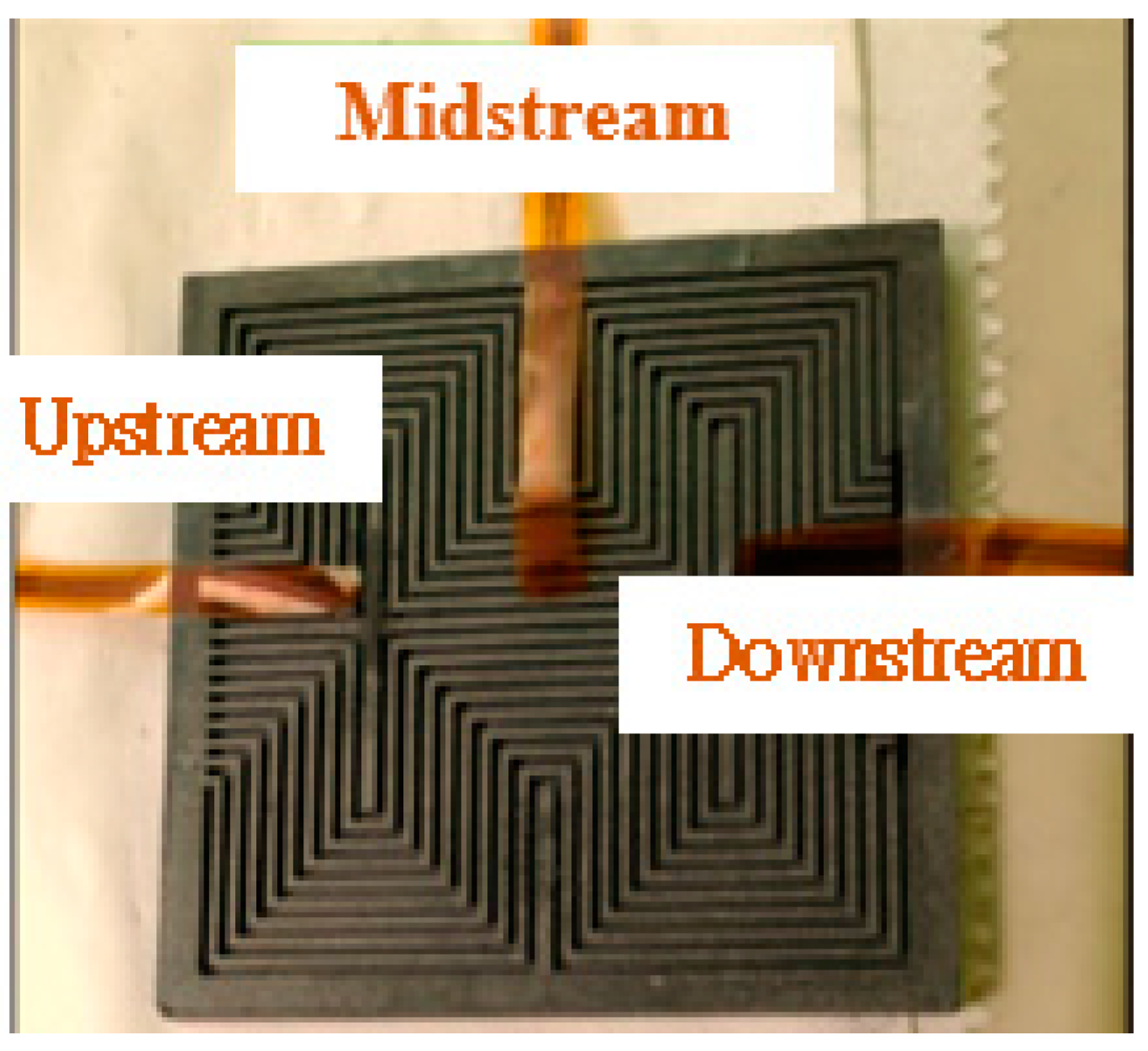
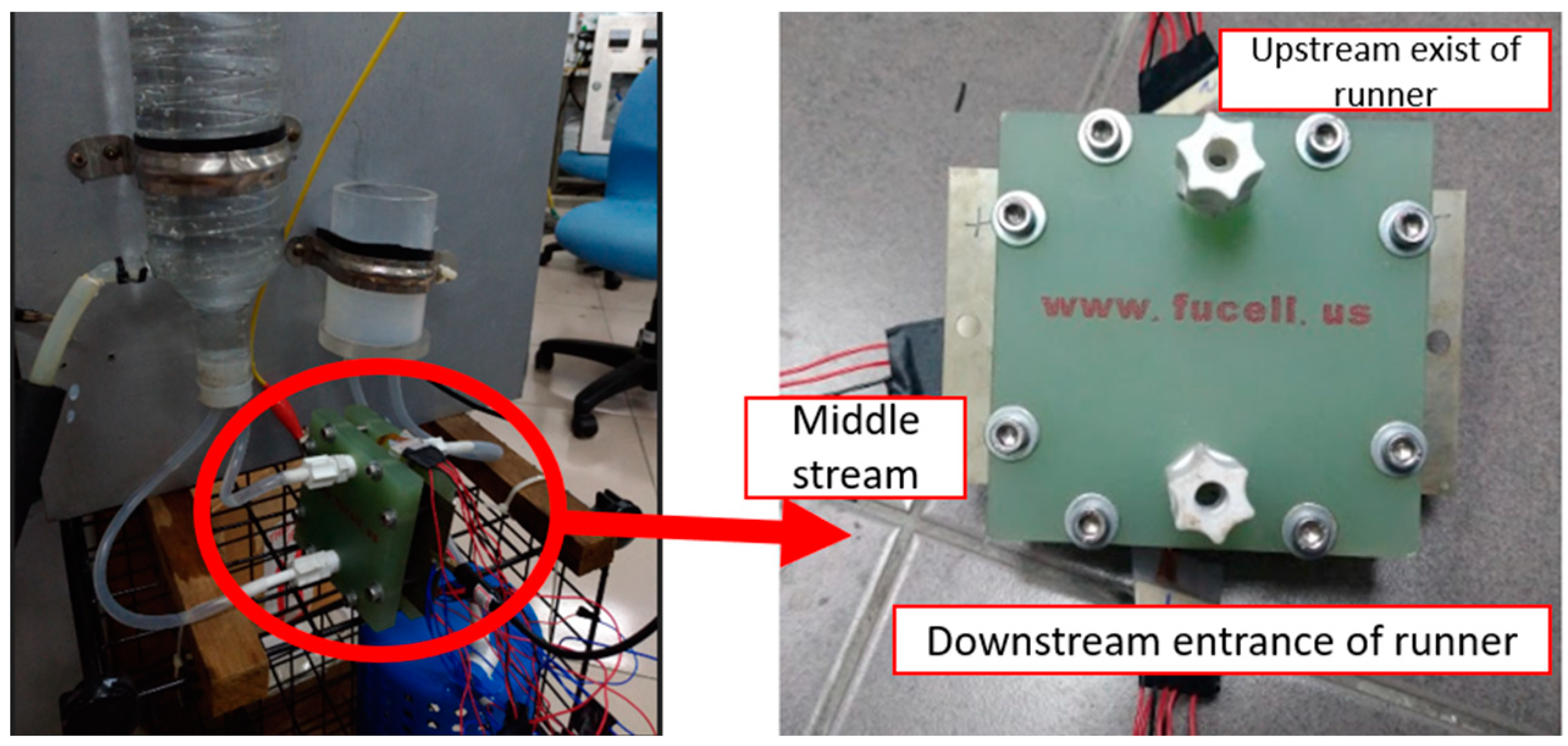
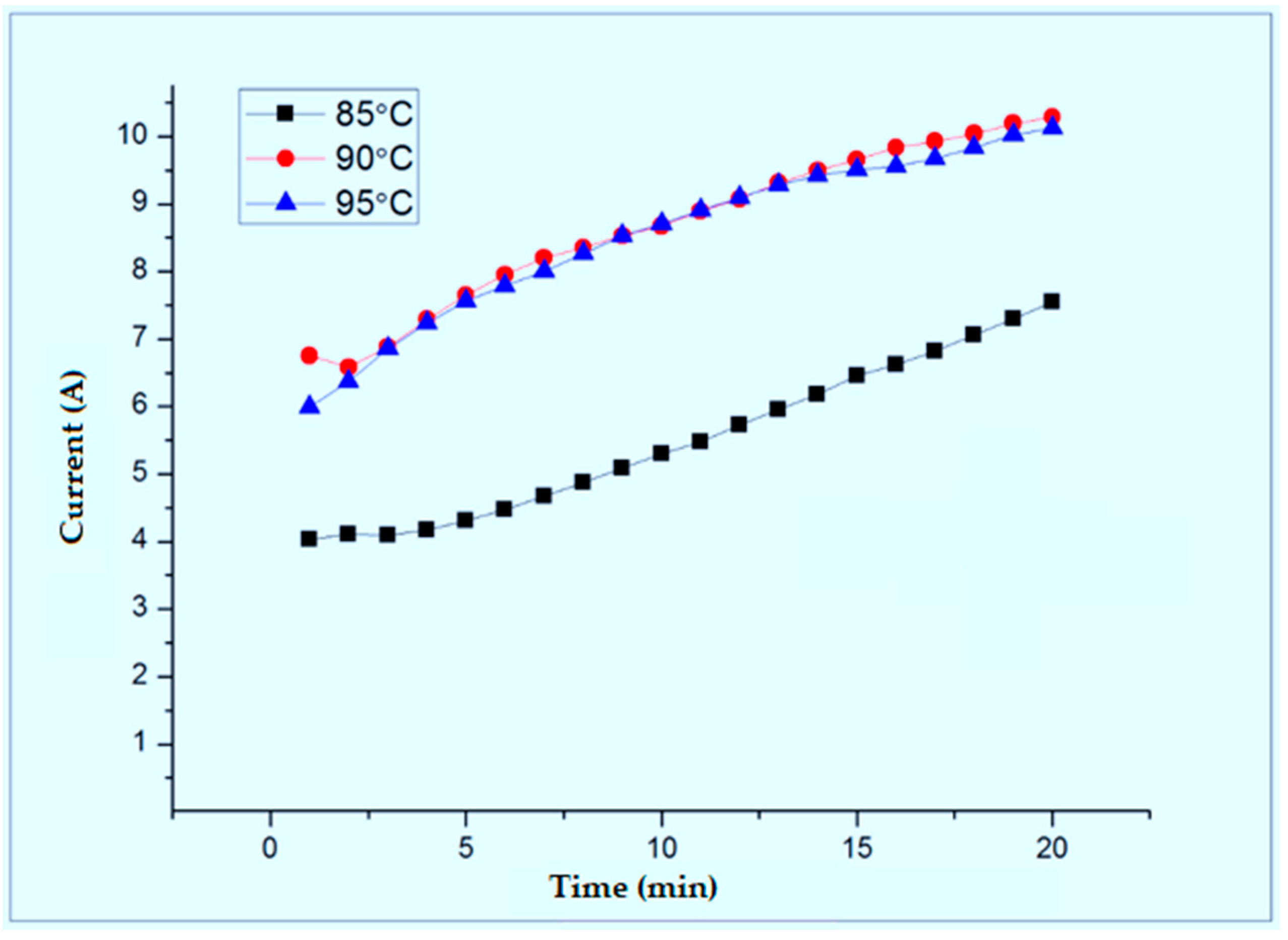
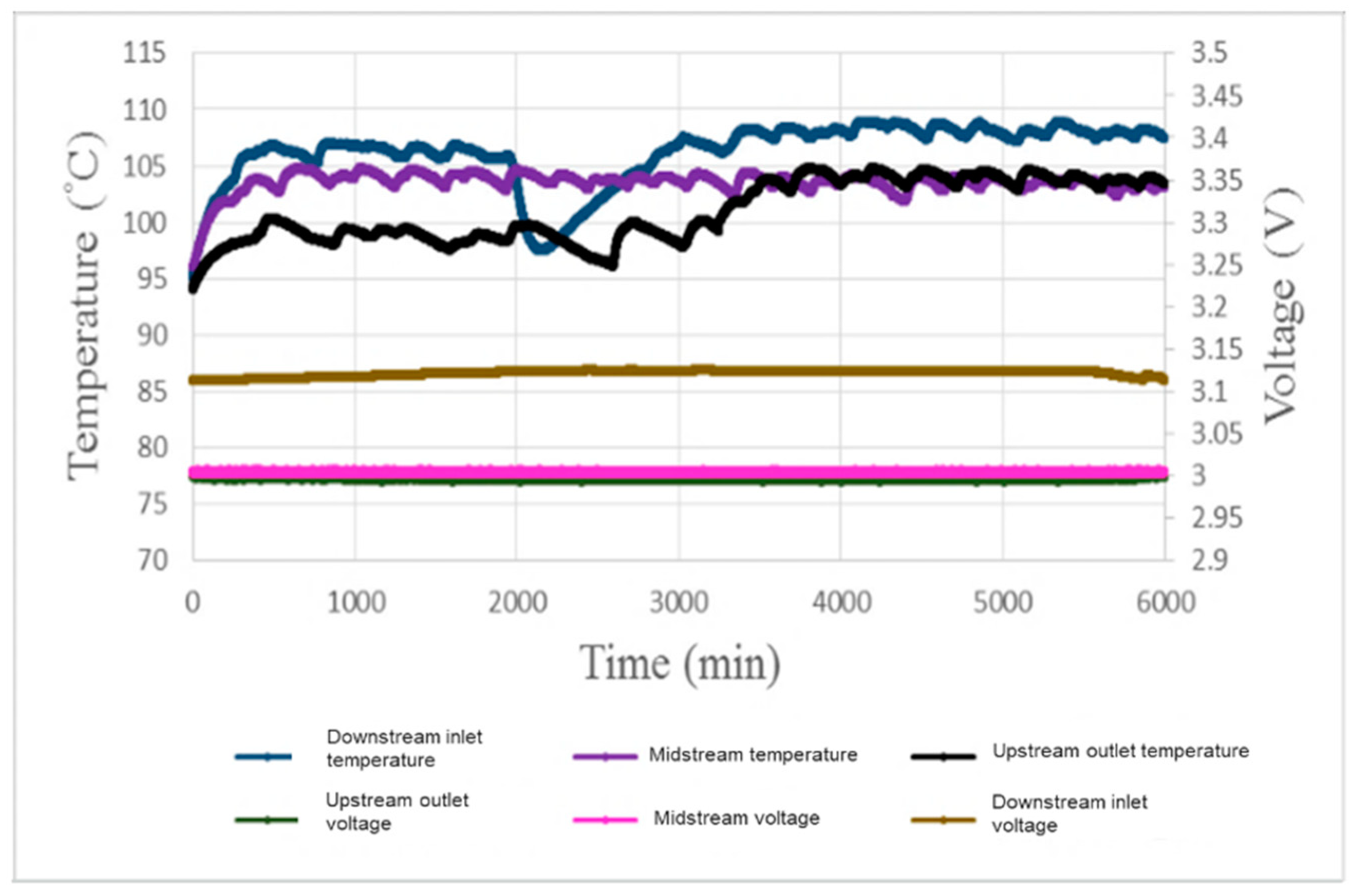
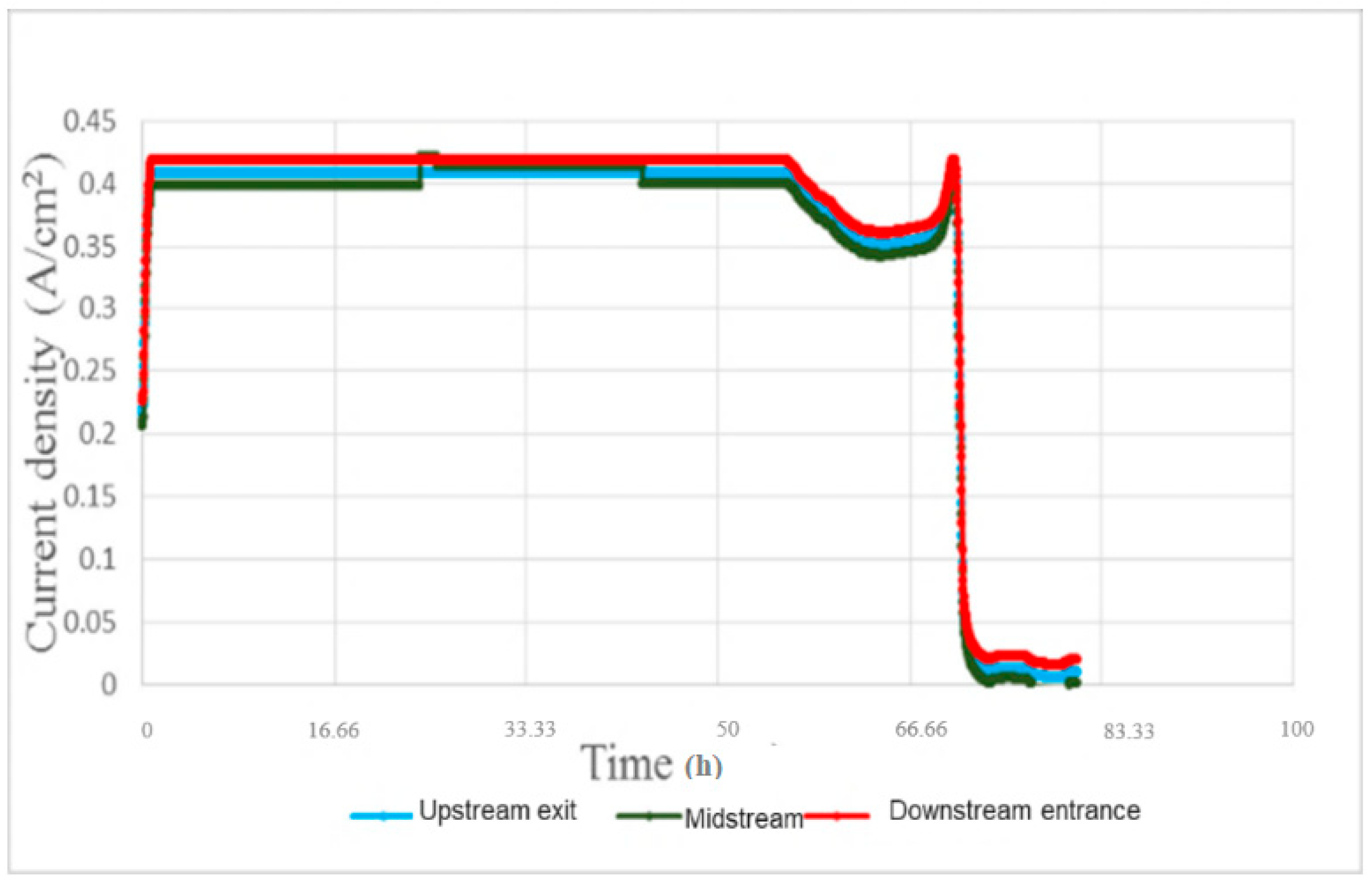
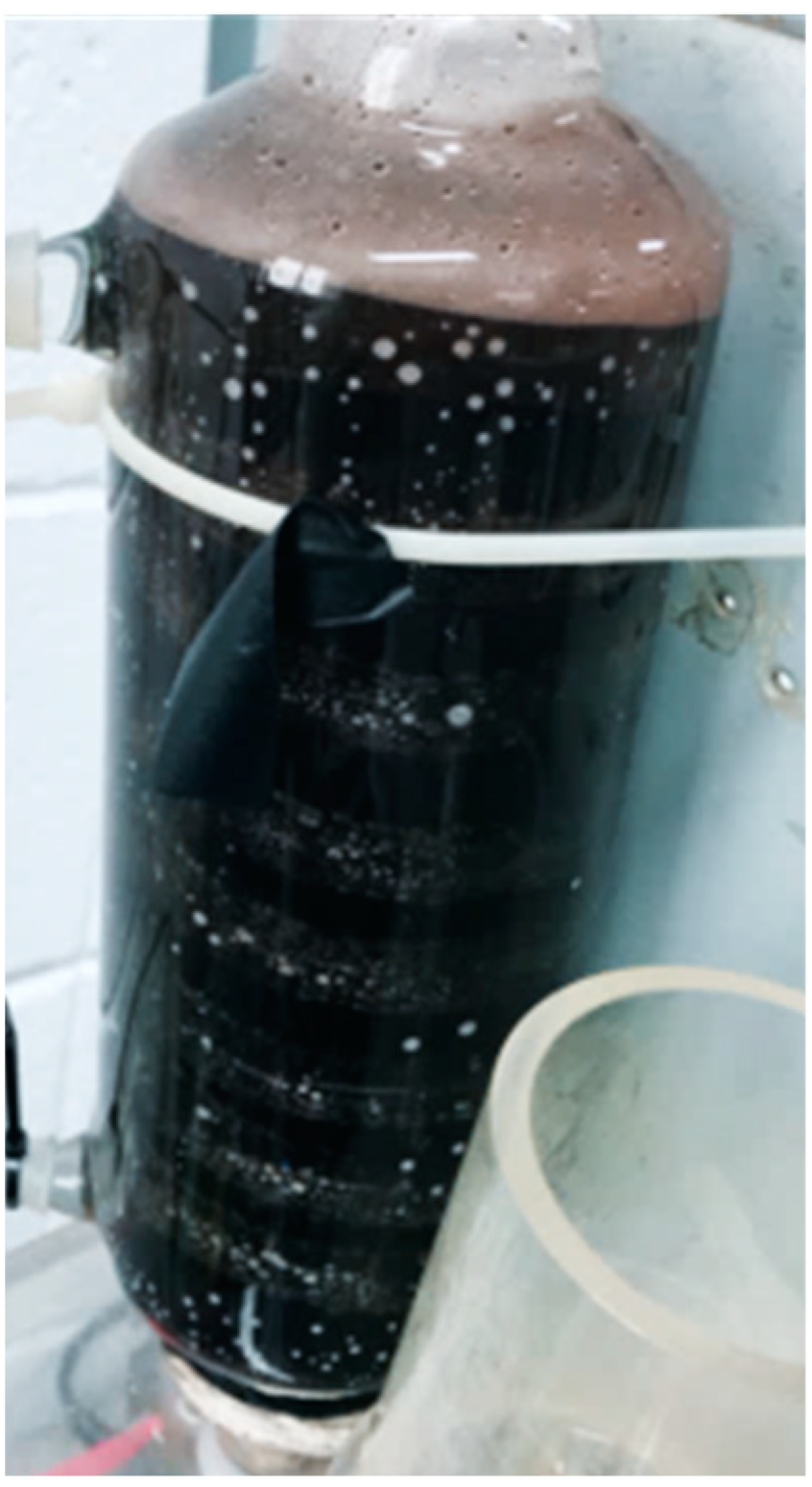
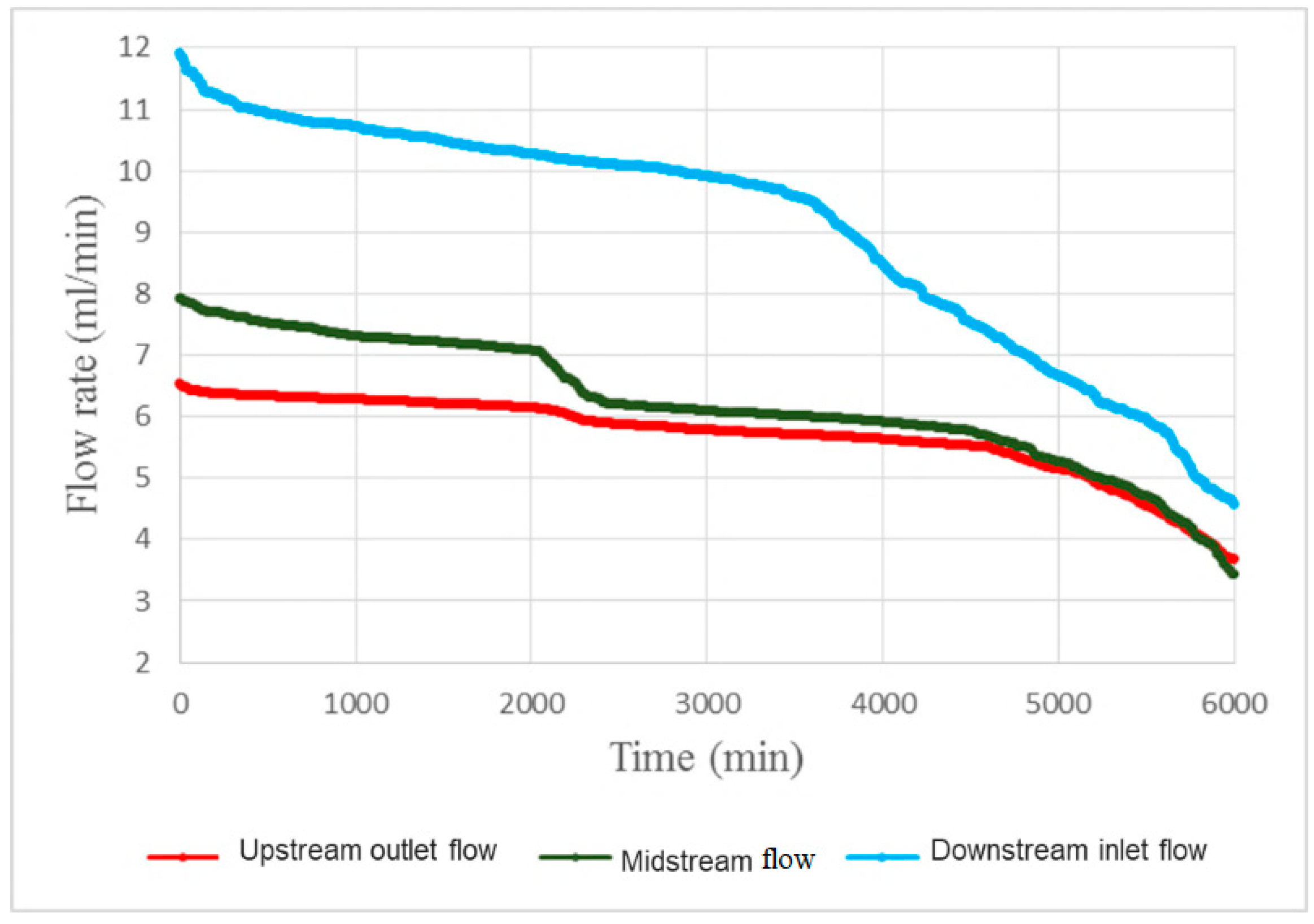
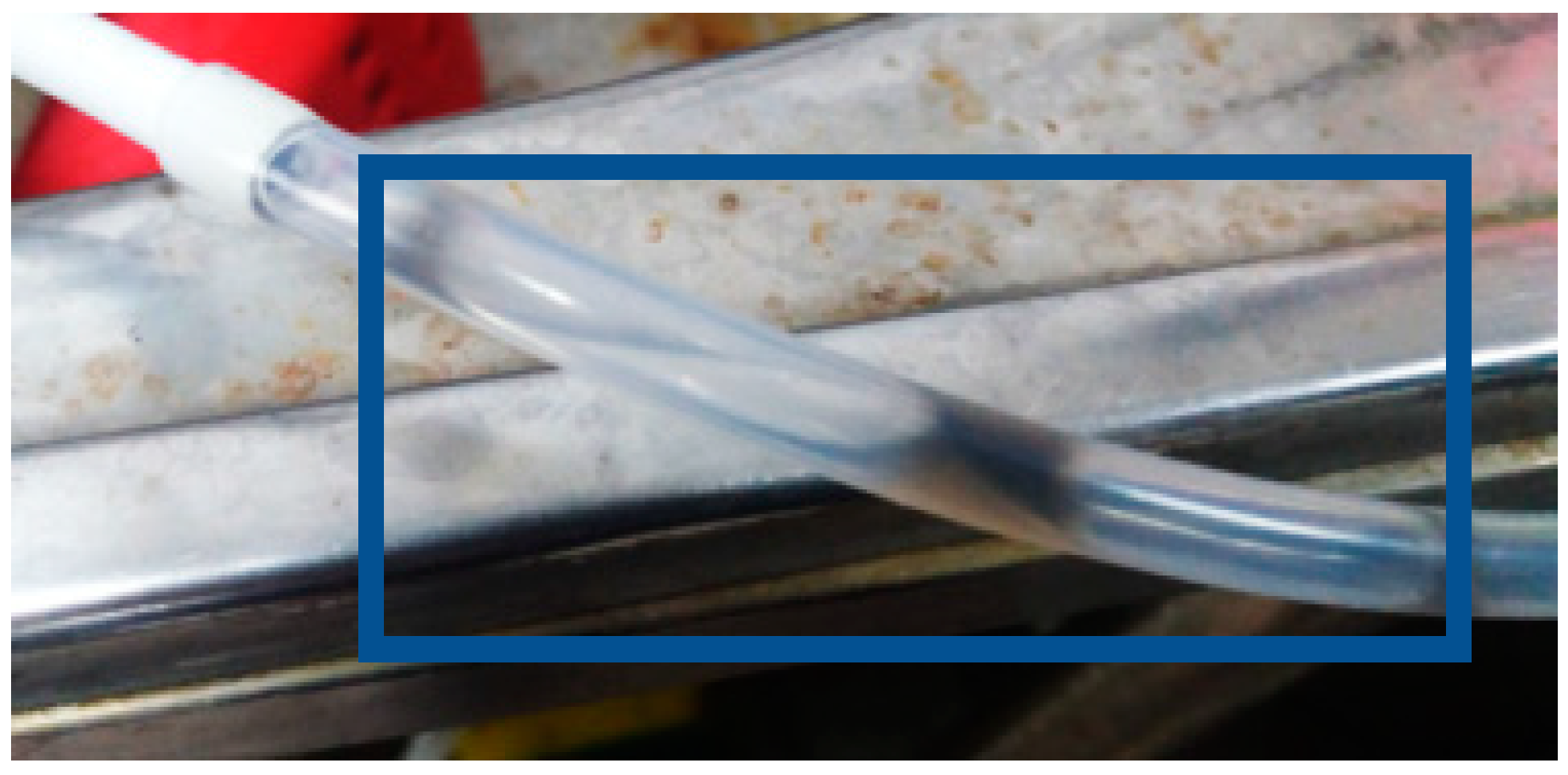
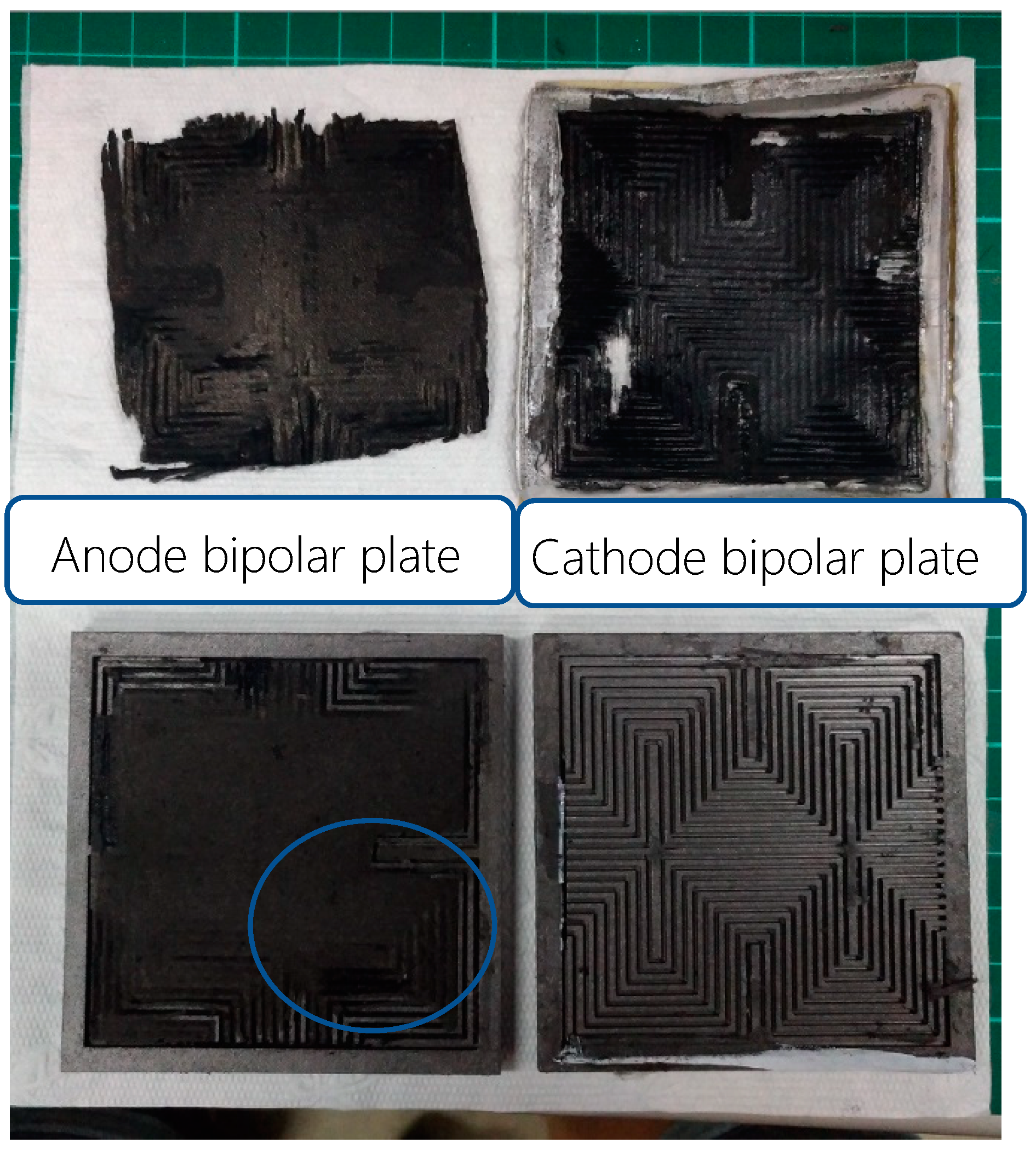
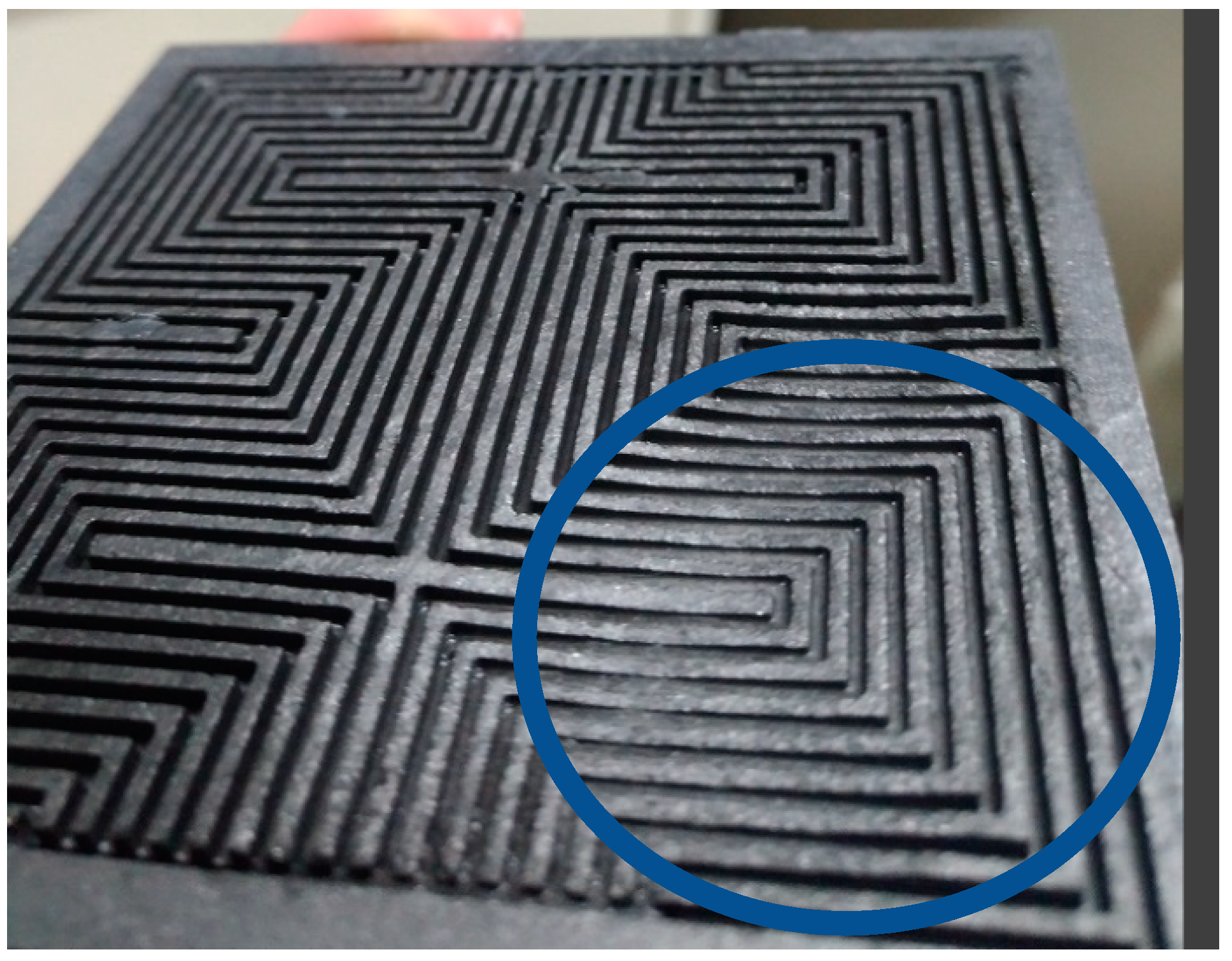
Publisher’s Note: MDPI stays neutral with regard to jurisdictional claims in published maps and institutional affiliations. |
© 2020 by the authors. Licensee MDPI, Basel, Switzerland. This article is an open access article distributed under the terms and conditions of the Creative Commons Attribution (CC BY) license (http://creativecommons.org/licenses/by/4.0/).
Share and Cite
Lee, C.-Y.; Chen, C.-H.; Jung, G.-B.; Li, S.-C.; Zeng, Y.-Z. Internal Microscopic Diagnosis of Accelerated Aging of Proton Exchange Membrane Water Electrolysis Cell Stack. Micromachines 2020, 11, 1078. https://doi.org/10.3390/mi11121078
Lee C-Y, Chen C-H, Jung G-B, Li S-C, Zeng Y-Z. Internal Microscopic Diagnosis of Accelerated Aging of Proton Exchange Membrane Water Electrolysis Cell Stack. Micromachines. 2020; 11(12):1078. https://doi.org/10.3390/mi11121078
Chicago/Turabian StyleLee, Chi-Yuan, Chia-Hung Chen, Guo-Bin Jung, Shih-Chun Li, and Yi-Zhen Zeng. 2020. "Internal Microscopic Diagnosis of Accelerated Aging of Proton Exchange Membrane Water Electrolysis Cell Stack" Micromachines 11, no. 12: 1078. https://doi.org/10.3390/mi11121078
APA StyleLee, C.-Y., Chen, C.-H., Jung, G.-B., Li, S.-C., & Zeng, Y.-Z. (2020). Internal Microscopic Diagnosis of Accelerated Aging of Proton Exchange Membrane Water Electrolysis Cell Stack. Micromachines, 11(12), 1078. https://doi.org/10.3390/mi11121078




